Oral Care
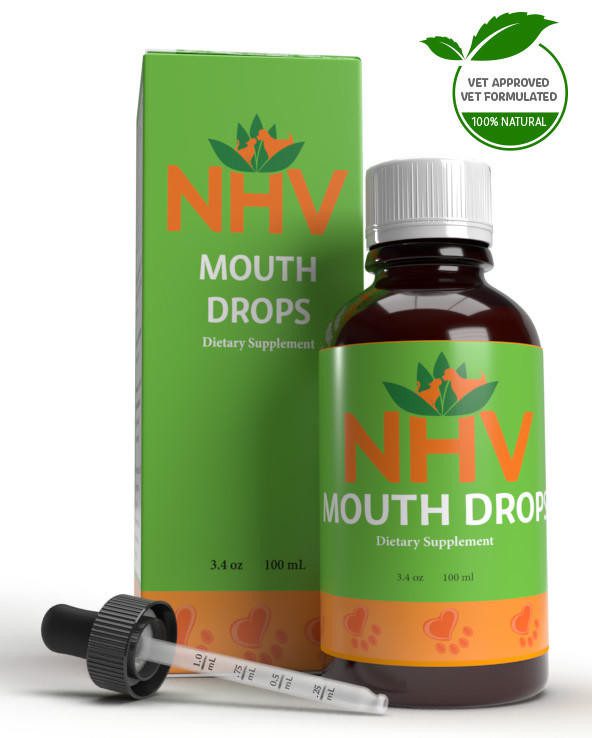
free shipping over $100 (USA & Canada)
1-877-937-4372 the pet expert hotline
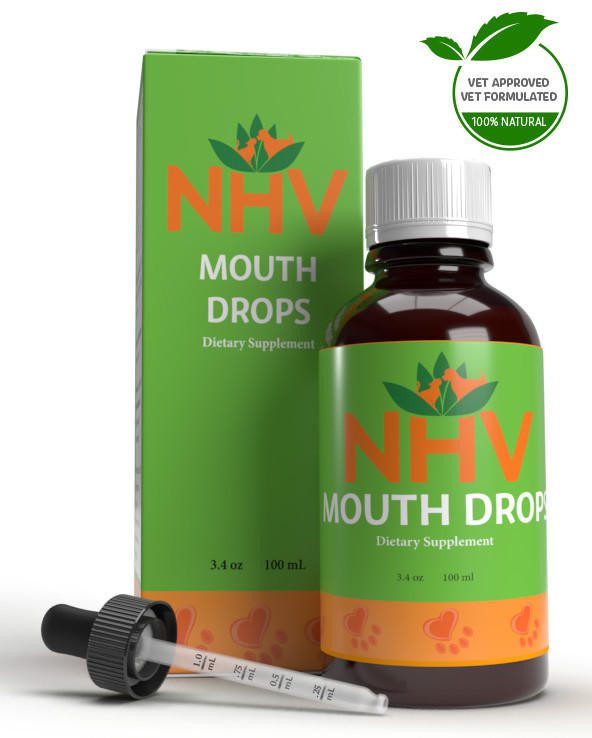
Holistic Support for Gingivitis, Gum Disease & Periodontal Disease in Dogs

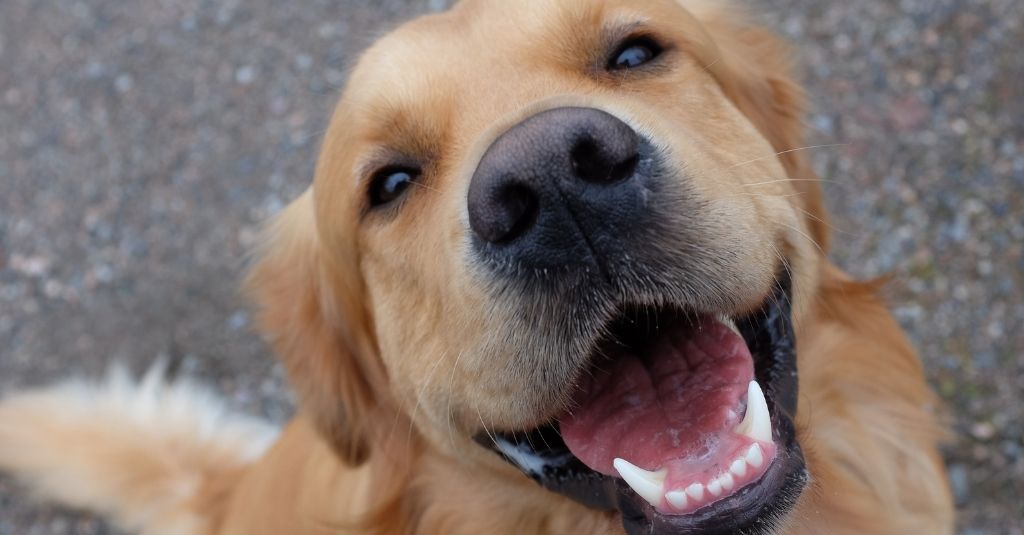
Plaque is effectively removed mechanically with a toothbrush.
Humans have the habit to brush their teeth every day but when it comes to our pets, this task can be complicated. Poor hygiene is a big problem as it can cause plaque and tartar that is dangerous for our pets. Unfortunately, it can affect more than 80% of dogs and cats over 3 years old.
In the advanced stage, there is a risk of tooth loss and even death. It also can reach the blood vessel resulting in generalized infection, kidney, and heart diseases. That’s why it is important that we take good care of our furkiddos’ teeth.
Plaque is a thin film of food debris, bacteria, saliva, and dead cells that are continually deposited on your pet’s teeth. Plaque that is present for more than 72 hours begins to harden into a substance called tartar (calculus) that accumulates at the base of the teeth. This buildup irritates contributes to the development of diseases such as periodontal disease (periodontitis), gum disease (gingivitis/swollen gums), heart disease, etc.
A good indication that your little one has tartar and/or plaque buildup is the yellow or brown discoloration of the teeth along the gum line. For gingivitis, the gums change in color from coral pink to red or purple, and the edge of the gum swells. The inflamed gums will often have a plaque at the base of the teeth. Bad breath can also be a sign of dental issues.
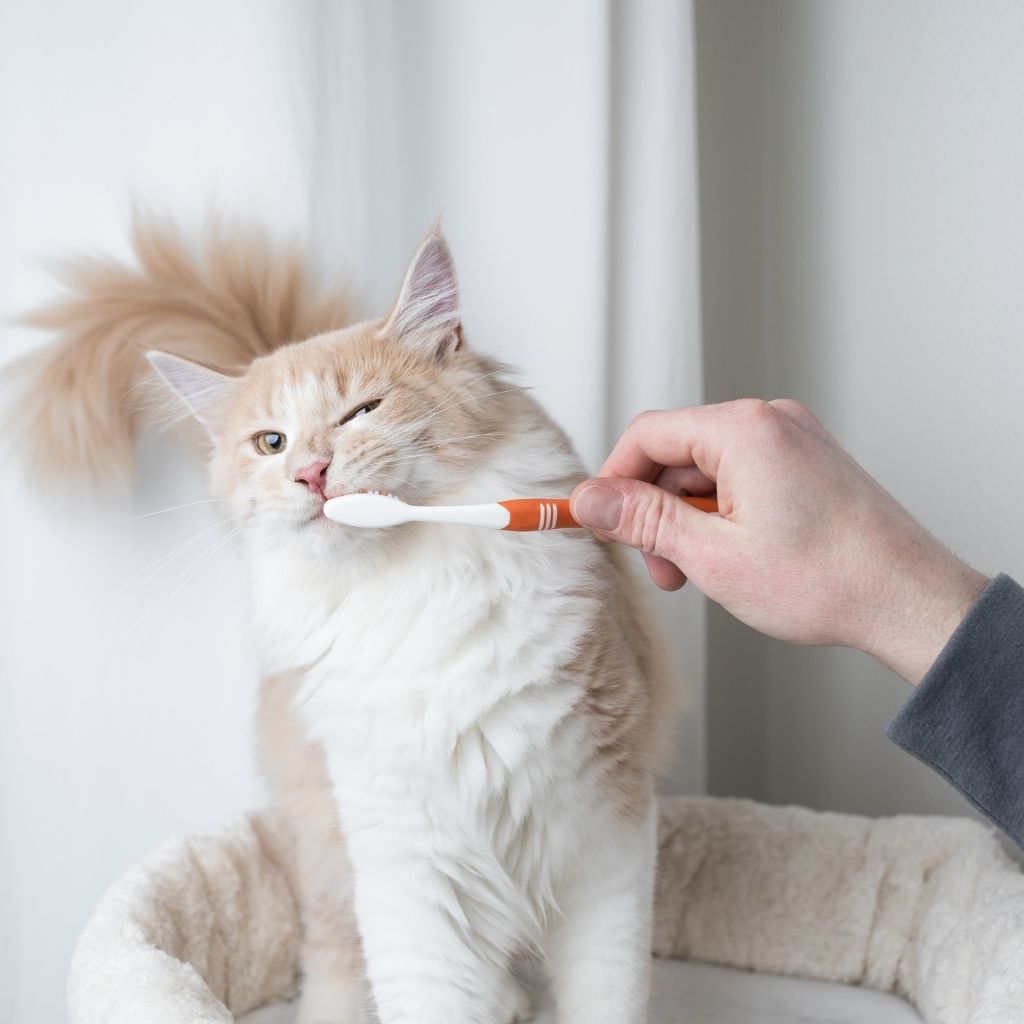
Plaque is a typical biofilm, composed of many microorganisms that are more resistant to antibiotics, disinfectants, and antibacterial agents. However, biofilms are easily and effectively removed mechanically with a toothbrush. The ideal would be brushing the teeth daily to remove the plaque and prevent tartar accumulation. Toothpaste made for people should not be used as it can be toxic to your pet. As some dogs and cats may not allow regular toothbrushing, you can remove the plaque by wiping every second or third day with a gauze pad. Plaque that remains on the tooth surface for more than 3 days mineralizes to form calculus that cannot be removed by brushing.
The texture of the diet treats, and toys may be helpful as well to cleaning the teeth. As they are firm it allows tooth penetration and may wipe the plaque from the tooth surfaces during chewing. In addition, some diet formulations are specific to help decrease oral bacteria and slow plaque mineralization.
Products such as Mouth Drops, that slow and prevent the plaque film from adhering to the teeth are also helpful.
Mouth Drops is a herbal, oral disinfectant that aids in eliminating bad breath, gingivitis, and helps combat bacterial infections of the mouth, and helps guard against tooth decay and plaque. Mouth Drops works similarly to mouthwash for humans and does not replace regular teeth brushing. We recommend using Mouth Drops after brushing their teeth for additional support or twice daily (after meals) for pets that will not allow teeth brushing.
If you have any questions about your pet’s oral health and ways you can keep those pearly whites healthy, we’re here to help! Click the button below to start chatting with our pet expert team now.
Oral Care

A natural herbal oral supplement that aids in eliminating bad breath, gingivitis, and helps combat bacterial infections of the mouth and helps guard against tooth decay and plaque.
buy 2 and save $3
3 month supply for a small to medium size pet.
1 bottle = 3 oz (100 ml)

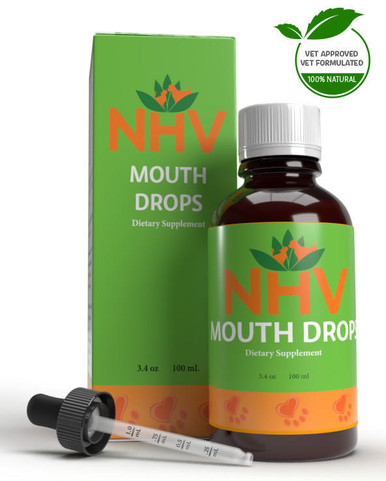
1 bottle = 3 oz (100 ml)

Does your pet have morning breath that lasts all day long? Mouth Drops from NHV Natural Pet Products are like a mouthwash for pets that helps eliminate bad breath, helps gingivitis, combats bacterial infections, and fight your pet's tooth decay and other dental problems. Use in combination with a nutritious diet and regular brushing to maintain the health of your pet’s teeth.
Mouth Drops may be beneficial for these conditions:
Additional Support:
Never attempt to diagnose a pet. A vet will be able to perform the required test and make the necessary suggestion.
White Oak – White oak is a type of hardwood tree native to eastern and central North America. It is traditionally used as an antiseptic, astringent, and anti-inflammatory herb. It has antiviral, antilithic, and astringent properties that control pain, inflammation, and help control bleeding.
Plantain – Plantain is an astringent, antibacterial, demulcent, emollient and anti-inflammatory herb. It has expectorant properties that soothe and lubricate internal mucous membranes, and helps stop bleeding.
Sage – Sage is often recommended as an antiseptic, and is commonly used for infections or sores of the mouth as well as topically for pets with gingivitis. It has anti-fungal, antiviral, astringent, diaphoretic and carminative properties. It also contains essential oils with antibacterial properties that neutralize mouth odor.
Echinacea Angustifolia – Commonly used for infections, Echinacea Angustifolia contains many active chemicals such as polysaccharides, flavonoids, caffeic acid, essential oils, alkylamides and polyacetylenes that have strong immune-stimulating (antiviral and antibacterial) properties.
Myrrh – It strengthens and activates the immune system and helps fight infections. It helps soothe inflamed gums, canker sores, loose teeth, and eliminates bad breath.
Neem – Neem has antibacterial, anti-fungal, anti-inflammatory, analgesic, and alterative properties, and is also high in antioxidants. Studies have found that it helps reduce plaque build up, defends against microorganisms, helps with gum bleeding, and reduces bacteria and bad breath.
Select your pet's weight to determine the correct dose.
Topically: To be taken twice daily. 1 drop for every 2 lb of body weight twice a day up to 50 lb. This is the minimum dosage.
Using the dropper squirt the dosage along teeth and gums.
Orally: To be taken twice daily. Determine your pet’s weight and then use the easy chart below to determine the correct dose. This is the minimum dosage.
Pet's Weight Dosage
0 - 15 lb = 0.5 ml
16 - 30 lb = 1.0 ml
31 - 45 lb = 1.5 ml
46 - 60 lb = 2.0 ml
61 - 75 lb = 2.5 ml
Over 75 lb = 3.0 ml
Some pets may require a larger dosage due to their metabolism. You can safely double the recommended dosage.
How to Administer
Shake well before use. Use the dropper provided to squirt the dosage directly into your pet’s mouth along the gums and teeth.. Some pets may be finicky and resist your attempts to administer drops directly into their mouth. If this occurs, try placing the drops in your pet’s food or favourite treat. You may want to consider hiding the drops in foods most pet’s love such as fish, chicken, or yogurt. When serving dry food, use the dropper to soak a few kibbles at feeding time.
For Best Results
Herbal dietary supplements are beneficial to the health and wellbeing of your pet and are safe for long-term use. Every pet responds to natural herbal supplements differently, therefore it is important to be consistent and administer the product daily. Supplements generally take two to four weeks to take effect, however this will vary from one animal to the next.
Product Storage
All NHV Natural Pet Products are pure herbal extracts and contain no artificial additives, preservatives or coloring. Shelf life after opening is 6 months and must be refrigerated after opening.
Cautions and Contraindications
Do not use Mouth Drops in pregnant or nursing animals. Speak to your vet before using our products. A second visit is recommended if your pet’s condition does not improve, or deteriorates after continued use of the supplements.
All information provided by NHV Natural Pet Products is for educational purposes only.
Does your pet have morning breath that lasts all day long? Mouth Drops from NHV Natural Pet Products are like a mouthwash for pets that helps eliminate bad breath, helps gingivitis, combats bacterial infections, and fight your pet's tooth decay and other dental problems. Use in combination with a nutritious diet and regular brushing to maintain the health of your pet’s teeth.
Mouth Drops may be beneficial for these conditions:
Additional Support:
Never attempt to diagnose a pet. A vet will be able to perform the required test and make the necessary suggestion.
White Oak – White oak is a type of hardwood tree native to eastern and central North America. It is traditionally used as an antiseptic, astringent, and anti-inflammatory herb. It has antiviral, antilithic, and astringent properties that control pain, inflammation, and help control bleeding.
Plantain – Plantain is an astringent, antibacterial, demulcent, emollient and anti-inflammatory herb. It has expectorant properties that soothe and lubricate internal mucous membranes, and helps stop bleeding.
Sage – Sage is often recommended as an antiseptic, and is commonly used for infections or sores of the mouth as well as topically for pets with gingivitis. It has anti-fungal, antiviral, astringent, diaphoretic and carminative properties. It also contains essential oils with antibacterial properties that neutralize mouth odor.
Echinacea Angustifolia – Commonly used for infections, Echinacea Angustifolia contains many active chemicals such as polysaccharides, flavonoids, caffeic acid, essential oils, alkylamides and polyacetylenes that have strong immune-stimulating (antiviral and antibacterial) properties.
Myrrh – It strengthens and activates the immune system and helps fight infections. It helps soothe inflamed gums, canker sores, loose teeth, and eliminates bad breath.
Neem – Neem has antibacterial, anti-fungal, anti-inflammatory, analgesic, and alterative properties, and is also high in antioxidants. Studies have found that it helps reduce plaque build up, defends against microorganisms, helps with gum bleeding, and reduces bacteria and bad breath.
Select your pet's weight to determine the correct dose.
Topically: To be taken twice daily. 1 drop for every 2 lb of body weight twice a day up to 50 lb. This is the minimum dosage.
Using the dropper squirt the dosage along teeth and gums.
Orally: To be taken twice daily. Determine your pet’s weight and then use the easy chart below to determine the correct dose. This is the minimum dosage.
Pet's Weight Dosage
0 - 15 lb = 0.5 ml
16 - 30 lb = 1.0 ml
31 - 45 lb = 1.5 ml
46 - 60 lb = 2.0 ml
61 - 75 lb = 2.5 ml
Over 75 lb = 3.0 ml
Some pets may require a larger dosage due to their metabolism. You can safely double the recommended dosage.
How to Administer
Shake well before use. Use the dropper provided to squirt the dosage directly into your pet’s mouth along the gums and teeth.. Some pets may be finicky and resist your attempts to administer drops directly into their mouth. If this occurs, try placing the drops in your pet’s food or favourite treat. You may want to consider hiding the drops in foods most pet’s love such as fish, chicken, or yogurt. When serving dry food, use the dropper to soak a few kibbles at feeding time.
For Best Results
Herbal dietary supplements are beneficial to the health and wellbeing of your pet and are safe for long-term use. Every pet responds to natural herbal supplements differently, therefore it is important to be consistent and administer the product daily. Supplements generally take two to four weeks to take effect, however this will vary from one animal to the next.
Product Storage
All NHV Natural Pet Products are pure herbal extracts and contain no artificial additives, preservatives or coloring. Shelf life after opening is 6 months and must be refrigerated after opening.
Cautions and Contraindications
Do not use Mouth Drops in pregnant or nursing animals. Speak to your vet before using our products. A second visit is recommended if your pet’s condition does not improve, or deteriorates after continued use of the supplements.
All information provided by NHV Natural Pet Products is for educational purposes only.
kidney & bladder support
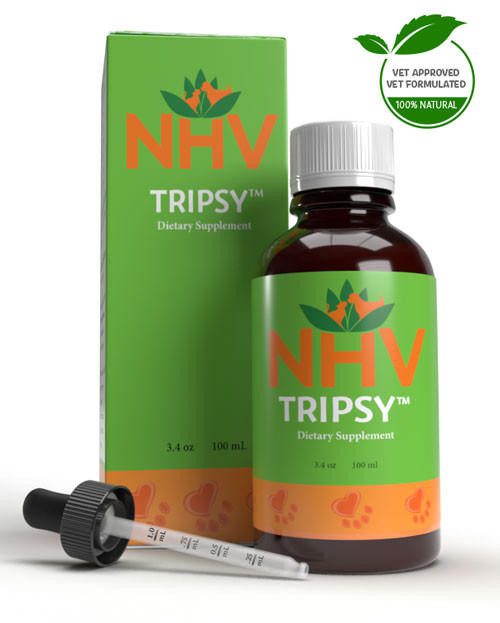
Supplement for kidney, renal and bladder problems in cats
buy 2 and save $3
3 month supply for a small to medium size

Specially formulated to gently and effectively promote proper urinary health as well as easing uncomfortable urination that often accompanies kidney problems in cats. With seven powerful ingredients, this supplement is highly effective in helping your cat’s urinary system.
NHV Tripsy for kidney problems in cats also helps to:
Many cats can suffer from kidney, renal and urinary disorders that can be uncomfortable. Kidney stones form when the body is unable to properly metabolize minerals due to a poor diet. If untreated, this may eventually lead to kidney failure, so making sure your feline family member gets adequate nutrition is vital.
NHV’s Tripsy is also safe to be given along with conventional treatments for kidney problems in cats. You can read about a recent evaluation done on the healing components of this powerful supplemental blend and how it alleviates bladder problems in cats.
Finding the right blend of kidney supplements for cats is easy online at NHV. If you have questions or concerns, you can always schedule a consultation because at NHV we want to provide you with the best service to help your cat live a healthy purrfect life naturally.
Stone Root – Acts as a tonic for the capillaries and prevents the formation of kidney calculi.
Parsley Piert – Aids digestion. Also used to aid fever, kidney stones, bladder stones and fluid retention.
Wild Hydrangea – May help with discomfort while increasing the flow of urine and eliminating swelling and fluid retention.
Gravel Root – Restores and cleanses the genitourinary (reproductive and urinary) organs.
Echinacea Purpurea – Contains strong immune-stimulating properties.
Marshmallow – An anti-inflammatory that controls bacterial infections and soothes and softens irritated tissues.
Oregon Grape – Helps relieve indigestion and malabsorption. Also has antibiotic and immunostimulatory properties.
Select your pet's weight to determine the correct dose.
To be taken twice daily. Determine your pet’s weight and then use the easy chart below to determine the correct dose. This is the minimum dosage.
Pet's Weight Dosage
0 - 15 lb = 0.5 ml
16 - 30 lb = 1.0 ml
31 - 45 lb = 1.5 ml
46 - 60 lb = 2.0 ml
61 - 75 lb = 2.5 ml
Over 75 lb = 3.0 ml
How to Administer
Shake well before use. The easiest method is to use the dropper provide and places the drops into your pet’s food or favorite treat. You can also use the dropper and squirt directly into the pet’s mouth.
Some pets can be finicky, if this occurs consider hiding the drops in foods most pet’s love such as fish, chicken or yogurt or a favourite treat. If your pet only eats dry food then soak a few kibbles at feeding time.
For Best Results
Herbal dietary supplements are beneficial to the health and wellbeing of your pet and are safe for long-term use. Every pet responds to natural herbal supplements differently, therefore it is important to be consistent and administer the product daily. Supplements generally take two to four weeks to take effect, however this will vary from one animal to the next.
Product Storage
All NHV Natural Pet Products are pure herbal extracts and contain no artificial additives, preservatives or coloring. Shelf life after opening is 6 months and must be refrigerated after opening.
Cautions and Contraindications
Do not use Tripsy if your pet is pregnant. No known side effects. Speak to your vet before using our products. A second visit is recommended if your pet’s condition does not improve, or deteriorates after continued use of the supplements.
All information provided by NHV Natural Pet Products is for educational purposes only.
Specially formulated to gently and effectively promote proper urinary health as well as easing uncomfortable urination that often accompanies kidney problems in cats. With seven powerful ingredients, this supplement is highly effective in helping your cat’s urinary system.
NHV Tripsy for kidney problems in cats also helps to:
Many cats can suffer from kidney, renal and urinary disorders that can be uncomfortable. Kidney stones form when the body is unable to properly metabolize minerals due to a poor diet. If untreated, this may eventually lead to kidney failure, so making sure your feline family member gets adequate nutrition is vital.
NHV’s Tripsy is also safe to be given along with conventional treatments for kidney problems in cats. You can read about a recent evaluation done on the healing components of this powerful supplemental blend and how it alleviates bladder problems in cats.
Finding the right blend of kidney supplements for cats is easy online at NHV. If you have questions or concerns, you can always schedule a consultation because at NHV we want to provide you with the best service to help your cat live a healthy purrfect life naturally.
Stone Root – Acts as a tonic for the capillaries and prevents the formation of kidney calculi.
Parsley Piert – Aids digestion. Also used to aid fever, kidney stones, bladder stones and fluid retention.
Wild Hydrangea – May help with discomfort while increasing the flow of urine and eliminating swelling and fluid retention.
Gravel Root – Restores and cleanses the genitourinary (reproductive and urinary) organs.
Echinacea Purpurea – Contains strong immune-stimulating properties.
Marshmallow – An anti-inflammatory that controls bacterial infections and soothes and softens irritated tissues.
Oregon Grape – Helps relieve indigestion and malabsorption. Also has antibiotic and immunostimulatory properties.
Select your pet's weight to determine the correct dose.
To be taken twice daily. Determine your pet’s weight and then use the easy chart below to determine the correct dose. This is the minimum dosage.
Pet's Weight Dosage
0 - 15 lb = 0.5 ml
16 - 30 lb = 1.0 ml
31 - 45 lb = 1.5 ml
46 - 60 lb = 2.0 ml
61 - 75 lb = 2.5 ml
Over 75 lb = 3.0 ml
How to Administer
Shake well before use. The easiest method is to use the dropper provide and places the drops into your pet’s food or favorite treat. You can also use the dropper and squirt directly into the pet’s mouth.
Some pets can be finicky, if this occurs consider hiding the drops in foods most pet’s love such as fish, chicken or yogurt or a favourite treat. If your pet only eats dry food then soak a few kibbles at feeding time.
For Best Results
Herbal dietary supplements are beneficial to the health and wellbeing of your pet and are safe for long-term use. Every pet responds to natural herbal supplements differently, therefore it is important to be consistent and administer the product daily. Supplements generally take two to four weeks to take effect, however this will vary from one animal to the next.
Product Storage
All NHV Natural Pet Products are pure herbal extracts and contain no artificial additives, preservatives or coloring. Shelf life after opening is 6 months and must be refrigerated after opening.
Cautions and Contraindications
Do not use Tripsy if your pet is pregnant. No known side effects. Speak to your vet before using our products. A second visit is recommended if your pet’s condition does not improve, or deteriorates after continued use of the supplements.
All information provided by NHV Natural Pet Products is for educational purposes only.
heart support
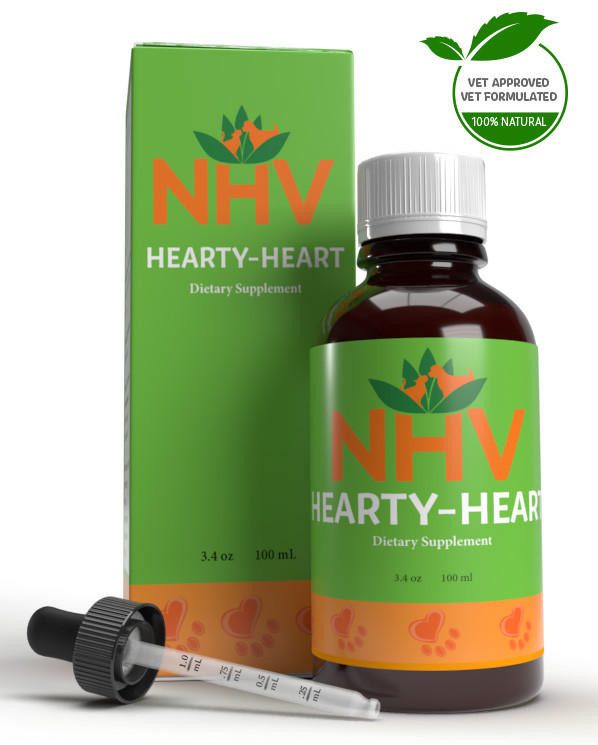
Supplement for heart conditions in dogs
buy 2 and save $3
3 month supply for a small to medium size pet.

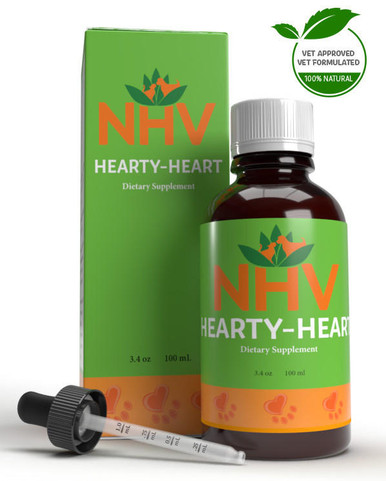

NHV Hearty Heart is an effective, gentle, and natural herbal remedy that supports and maintains healthy heart function in dogs. This heart supplement for dogs provides effective support for canine heart diseases and cardiovascular disorders.
Cardiovascular disease affects over 10% of all animals, and congestive heart failure affects 20-40% of dogs. The cardiovascular system is comprised of the heart, along with arteries and veins.
Once your dog is diagnosed with any heart issue, it will be a condition that persists for a lifetime. That is why taking care of your dog’s heart with supplements that are vet-formulated and all-natural are so important.
For vet advice regarding heart conditions in dogs, read Dr. Hillary Cook's blog to break down symptoms to look for, and breeds of dogs that are more at risk.
With NHV’s Hearty Heart, your dog will be getting a powerful blend of herbal remedies that provide support for the heart, valves, and the entire pulmonary system. The combination of potent botanicals delivers herbs to the heart that help to improve:
NHV’s Hearty Heart supplements for dogs contain a powerful blend of herbs that help the brain, lungs, major arteries as well as the heart itself.
Find out more about dog heart conditions with the inspiring story of Katie, the Cavalier who has genetic heart disease and found out that a little prevention goes a long way because, at NHV, we want your canine companion to live a long and healthy life naturally.

Hawthorne – the most powerful herb for the heart health of dogs. Hawthorn acts as a cardio tonic, which helps stabilize the heart’s activity based on what a dog’s heart needs; either to be stimulated or reduced. Hawthorn has traditionally been used for heart failure, heart palpitations, heart weakness, and for the circulatory system. This herb works by dilating the vessels and the coronary arteries, which improves the metabolic process and the blood supply to the heart and the rest of the body. Hawthorn may help with dog heart conditions by regulating your dog’s heart rate, coronary flow, and blood pressure. It also has a soothing and sedative effect that helps reduce stress.
Balsam Poplar – Encourages circulation and supports blood flow. Balsam Poplar has historically been used in North America by indigenous peoples for coughs, respiratory issues, and as a food for horses. This herb has strong anti-inflammatory and pain relieving properties.
Hops – Helps relax tension and anxiety while supporting circulation. This herb has calming, mild diuretic, and digestive properties. Studies have found that it helps as a heart supplement for dogs with restlessness and anxiety when experiencing physical stress.
Valerian – Beneficial for heart palpitations and regulates the nervous system. It is a gentle sedative that works on the nervous system by helping to calm a dog without making a pet drowsy. Valerian has been used by herbalist to help with anxiety and insomnia.
Woody Betony – This herb is one of the most valued in herbal medicine and has been used for decades for various ailments. It acts as a mild stimulant to the heart. Woody Betony is a nerve tonic that nourishes and builds vital energy. It contains glycosides, which may help reduce blood pressure in canines.
Lobelia – Causes immediate relaxation and expansion of the respiratory system that allows oxygenated blood to flow freely. It eases coughs brought on by heart issues.
European Mistletoe – This plant is considered to be a sacred plant and was called “all-heal" by the Celtic people. The parts used are the leaves and stems. Mistletoe has a long history in herbalism. It is used as a heart supplement for dogs to regulate blood pressure and to lower the heart rate. It also helps with anxiety, restlessness, and energy. Studies show that the herb Mistletoe has been used for various cancers as well.
Motherwort – Has a strengthening effect, especially on a weak heart. It is considered to be a mild sedative with relaxing properties. Motherwort has been used in herbal preparations to help ease heart palpations and rapid heart rates. It is a cardiotonic, which has traditionally been used to improve blood flow and to support heart health.
Pulsatilla – this herb is known to be antispasmodic which is considered to be beneficial in relaxing the heart muscle and helps to soothe coughing.
Select your pet's weight to determine the correct dose.
To be taken twice daily. Determine your pet’s weight and then use the easy chart below to determine the correct dose. This is the minimum dosage.
Pet's Weight Dosage
0 - 15 lb = 0.5 ml
16 - 30 lb = 1.0 ml
31 - 45 lb = 1.5 ml
46 - 60 lb = 2.0 ml
61 - 75 lb = 2.5 ml
Over 75 lb = 3.0 ml
For small animals (rabbits, ferrets), avians and reptiles use 1 drop for every 2 lb of body weight.
How to Administer
Shake well before use. The easiest method is to use the dropper provide and places the drops into your pet’s food or favorite treat. You can also use the dropper and squirt directly into the pet’s mouth.
Some pets can be finicky, if this occurs consider hiding the drops in foods most pet’s love such as fish, chicken or yogurt or a favorite treat. If your pet only eats dry food then soak a few kibbles at feeding time.
For Best Results
Herbal dietary supplements are beneficial to the health and wellbeing of your pet and are safe for long-term use. Every pet responds to natural herbal supplements differently, therefore it is important to be consistent and administer the product daily. Supplements generally take two to four weeks to take effect, however this will vary from one animal to the next.
Product Storage
All NHV Natural Pet Products are pure herbal extracts and contain no artificial additives, preservatives or coloring. Shelf life after opening is 6 months and must be refrigerated after opening.
Cautions and Contraindications
Do not use Hearty-Heart in pregnant or nursing animals. Speak to your vet before using our products. A second visit is recommended if your pet’s condition does not improve, or deteriorates after continued use of the supplements.
All information provided by NHV Natural Pet Products is for educational purposes only.
NHV Hearty Heart is an effective, gentle, and natural herbal remedy that supports and maintains healthy heart function in dogs. This heart supplement for dogs provides effective support for canine heart diseases and cardiovascular disorders.
Cardiovascular disease affects over 10% of all animals, and congestive heart failure affects 20-40% of dogs. The cardiovascular system is comprised of the heart, along with arteries and veins.
Once your dog is diagnosed with any heart issue, it will be a condition that persists for a lifetime. That is why taking care of your dog’s heart with supplements that are vet-formulated and all-natural are so important.
For vet advice regarding heart conditions in dogs, read Dr. Hillary Cook's blog to break down symptoms to look for, and breeds of dogs that are more at risk.
With NHV’s Hearty Heart, your dog will be getting a powerful blend of herbal remedies that provide support for the heart, valves, and the entire pulmonary system. The combination of potent botanicals delivers herbs to the heart that help to improve:
NHV’s Hearty Heart supplements for dogs contain a powerful blend of herbs that help the brain, lungs, major arteries as well as the heart itself.
Find out more about dog heart conditions with the inspiring story of Katie, the Cavalier who has genetic heart disease and found out that a little prevention goes a long way because, at NHV, we want your canine companion to live a long and healthy life naturally.

Hawthorne – the most powerful herb for the heart health of dogs. Hawthorn acts as a cardio tonic, which helps stabilize the heart’s activity based on what a dog’s heart needs; either to be stimulated or reduced. Hawthorn has traditionally been used for heart failure, heart palpitations, heart weakness, and for the circulatory system. This herb works by dilating the vessels and the coronary arteries, which improves the metabolic process and the blood supply to the heart and the rest of the body. Hawthorn may help with dog heart conditions by regulating your dog’s heart rate, coronary flow, and blood pressure. It also has a soothing and sedative effect that helps reduce stress.
Balsam Poplar – Encourages circulation and supports blood flow. Balsam Poplar has historically been used in North America by indigenous peoples for coughs, respiratory issues, and as a food for horses. This herb has strong anti-inflammatory and pain relieving properties.
Hops – Helps relax tension and anxiety while supporting circulation. This herb has calming, mild diuretic, and digestive properties. Studies have found that it helps as a heart supplement for dogs with restlessness and anxiety when experiencing physical stress.
Valerian – Beneficial for heart palpitations and regulates the nervous system. It is a gentle sedative that works on the nervous system by helping to calm a dog without making a pet drowsy. Valerian has been used by herbalist to help with anxiety and insomnia.
Woody Betony – This herb is one of the most valued in herbal medicine and has been used for decades for various ailments. It acts as a mild stimulant to the heart. Woody Betony is a nerve tonic that nourishes and builds vital energy. It contains glycosides, which may help reduce blood pressure in canines.
Lobelia – Causes immediate relaxation and expansion of the respiratory system that allows oxygenated blood to flow freely. It eases coughs brought on by heart issues.
European Mistletoe – This plant is considered to be a sacred plant and was called “all-heal" by the Celtic people. The parts used are the leaves and stems. Mistletoe has a long history in herbalism. It is used as a heart supplement for dogs to regulate blood pressure and to lower the heart rate. It also helps with anxiety, restlessness, and energy. Studies show that the herb Mistletoe has been used for various cancers as well.
Motherwort – Has a strengthening effect, especially on a weak heart. It is considered to be a mild sedative with relaxing properties. Motherwort has been used in herbal preparations to help ease heart palpations and rapid heart rates. It is a cardiotonic, which has traditionally been used to improve blood flow and to support heart health.
Pulsatilla – this herb is known to be antispasmodic which is considered to be beneficial in relaxing the heart muscle and helps to soothe coughing.
Select your pet's weight to determine the correct dose.
To be taken twice daily. Determine your pet’s weight and then use the easy chart below to determine the correct dose. This is the minimum dosage.
Pet's Weight Dosage
0 - 15 lb = 0.5 ml
16 - 30 lb = 1.0 ml
31 - 45 lb = 1.5 ml
46 - 60 lb = 2.0 ml
61 - 75 lb = 2.5 ml
Over 75 lb = 3.0 ml
For small animals (rabbits, ferrets), avians and reptiles use 1 drop for every 2 lb of body weight.
How to Administer
Shake well before use. The easiest method is to use the dropper provide and places the drops into your pet’s food or favorite treat. You can also use the dropper and squirt directly into the pet’s mouth.
Some pets can be finicky, if this occurs consider hiding the drops in foods most pet’s love such as fish, chicken or yogurt or a favorite treat. If your pet only eats dry food then soak a few kibbles at feeding time.
For Best Results
Herbal dietary supplements are beneficial to the health and wellbeing of your pet and are safe for long-term use. Every pet responds to natural herbal supplements differently, therefore it is important to be consistent and administer the product daily. Supplements generally take two to four weeks to take effect, however this will vary from one animal to the next.
Product Storage
All NHV Natural Pet Products are pure herbal extracts and contain no artificial additives, preservatives or coloring. Shelf life after opening is 6 months and must be refrigerated after opening.
Cautions and Contraindications
Do not use Hearty-Heart in pregnant or nursing animals. Speak to your vet before using our products. A second visit is recommended if your pet’s condition does not improve, or deteriorates after continued use of the supplements.
All information provided by NHV Natural Pet Products is for educational purposes only.
Published: June 23, 2021